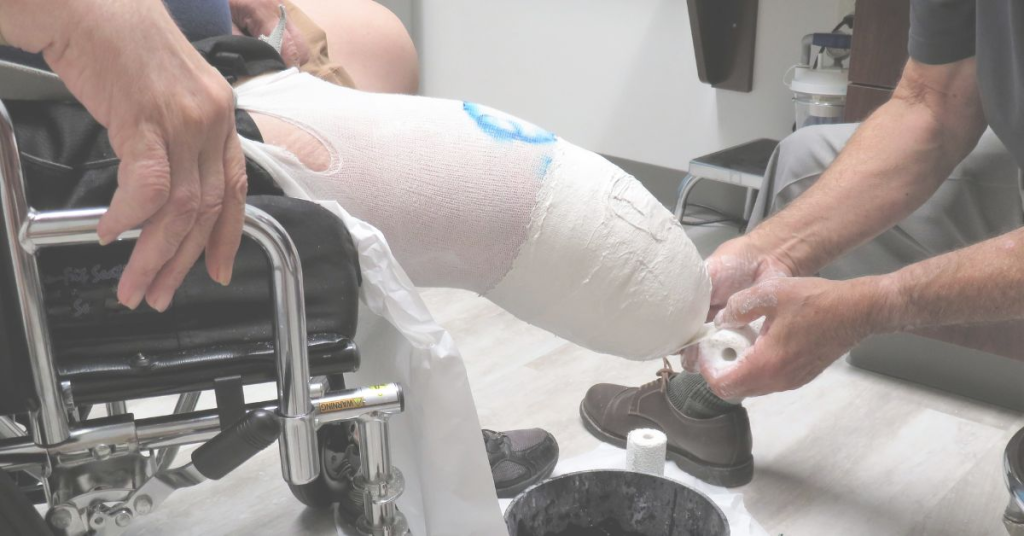Understanding amputations is a crucial aspect of both medical history and contemporary healthcare practices. The procedure itself, involving the removal of a limb or part of a limb, has evolved significantly from its early days, particularly during events like the American Civil War, where amputation history reveals a staggering number of surgeries performed under dire conditions. Modern amputation techniques now prioritize limb preservation, focusing on innovative solutions that minimize the need for such drastic measures. Recent amputation news highlights advancements in surgical methods and post-operative care that aim to improve patient outcomes and quality of life. By grasping the complexities surrounding amputations, we can appreciate the strides made in medical science and the ongoing efforts to enhance patient care.
The topic of limb removal, also known as amputation, encompasses a range of medical practices and historical narratives that inform our understanding of this surgical intervention today. This procedure, which can stem from traumatic injuries, infections, or chronic conditions, has undergone transformation over the years, especially with the lessons learned from historical events, such as amputation in the Civil War. The shift towards modern techniques reflects a commitment to limb preservation, where medical professionals are increasingly focused on preserving functionality and minimizing the emotional and physical impact of losing a limb. Furthermore, discussions around amputation have expanded to include the latest innovations and risks associated with the procedure, emphasizing the importance of ongoing education and research in this vital area of healthcare. As we explore the various aspects of amputations, it’s essential to recognize the interplay between historical practices and contemporary advancements.
Understanding Amputations: A Historical Overview
Amputation has a long and complex history, with roots tracing back to ancient civilizations. In these early societies, amputations were often performed without the benefit of modern medical knowledge or anesthesia, leading to high rates of infection and mortality. Over the centuries, the reasons for amputations have evolved, with significant increases during wartime. Notably, the American Civil War marked a pivotal moment in the history of amputation, as battlefield conditions necessitated rapid surgical interventions to save lives, resulting in a staggering number of limb removals.
During the Civil War, battlefield surgeons faced daunting challenges as they performed around 60,000 amputations, driven by the need to treat severe injuries resulting from gunshot wounds. This period highlighted not only the necessity of amputations but also the brutal techniques that were employed. Surgeons often resorted to crude methods under dire conditions, earning them a notorious reputation. Understanding this historical context is essential, as it informs modern perspectives on surgical practices and the ongoing advancements in limb preservation.
Modern Amputation Techniques: Innovations and Improvements
Today, the field of amputation surgery has seen remarkable advancements compared to the techniques used in the past. Modern practices prioritize patient safety and recovery, with the use of anesthesia and improved surgical methods significantly reducing the risks associated with amputations. Surgeons now employ precise techniques that minimize trauma to surrounding tissues, coupled with enhanced post-operative care, which has resulted in lower rates of complications such as infection and excessive blood loss.
Moreover, the development of better prosthetics and rehabilitation programs has transformed the lives of amputees, allowing them to maintain a higher quality of life. Innovations in surgical technology, including minimally invasive procedures, have become more common, reflecting a shift towards preferring limb preservation whenever possible. These modern techniques aim to not only treat the immediate injury but also to facilitate long-term recovery and integration into daily life.
Limb Preservation: A New Era in Surgical Practices
Limb preservation has emerged as a central focus in contemporary medicine, particularly for patients suffering from chronic conditions such as diabetes and peripheral artery disease. Medical professionals are increasingly exploring alternatives to amputation, employing advanced techniques that aim to salvage limbs. This shift reflects an understanding of the profound impact that losing a limb can have on an individual’s physical and emotional well-being.
Recent initiatives, such as the establishment of specialized limb preservation centers, signify a commitment to providing patients with innovative treatment options. For instance, the recent $5 million donation to create a limb preservation center highlights the growing awareness and resources dedicated to avoiding amputations. These developments not only represent advancements in surgical practices but also underscore the importance of patient-centered care and improving health outcomes.
Amputation in the Civil War: Lessons Learned
The American Civil War serves as a crucial case study for understanding the evolution of amputation practices. With around 50,000 soldiers losing limbs due to battlefield injuries, the era was marked by a high incidence of amputations driven by the urgent need to save lives amid chaos. Surgeons, often pressed for time and lacking proper medical resources, utilized techniques that were not only painful but also risky, leading to significant debates about the ethics and effectiveness of their methods.
Reflecting on this period allows modern practitioners to appreciate the advancements made in surgical procedures. The Civil War highlighted the need for improved training and resources for surgeons, which ultimately led to the establishment of better medical practices and more humane treatment options. Understanding these historical lessons can guide current and future medical professionals in their efforts to enhance surgical care and develop more effective approaches to managing traumatic injuries.
Latest Amputation News: Trends and Developments
Recent news in the field of amputation has shed light on both the challenges and advancements associated with this surgical procedure. For instance, a significant recall of coolers due to risks associated with fingertip amputations underscores the ongoing concern for public safety and the potential hazards present in everyday products. This incident serves as a reminder of the importance of vigilance in preventing accidents that could lead to amputations.
Additionally, the establishment of limb preservation centers reflects a proactive approach within the healthcare system to address the growing need for alternatives to amputation. As more institutions recognize the importance of preserving limbs, we see a surge in research and innovation aimed at improving patient outcomes. These developments not only highlight advancements in medical technology but also emphasize the ongoing dialogue about amputation and limb preservation in contemporary healthcare.
Frequently Asked Questions
What is the historical significance of amputations during the Civil War?
Understanding amputations in the context of the Civil War reveals that approximately 60,000 amputations were performed, making it a pivotal period in amputation history. Battlefield surgeons had to act quickly to save lives, resulting in a high rate of amputations due to injuries from gunfire. This historical backdrop highlights the evolution of surgical techniques and the urgent need for limb preservation.
How have modern amputation techniques evolved from historical practices?
Modern amputation techniques have significantly evolved from historical practices, particularly those used during the Civil War. Advances in anesthesia, surgical methods, and post-operative care have dramatically improved patient outcomes, reducing risks such as blood loss and infection. Today’s focus is on limb preservation and exploring alternatives to amputation, reflecting a more humane and advanced approach to surgical care.
What is limb preservation and how does it relate to modern amputation practices?
Limb preservation refers to medical strategies aimed at preventing the need for amputation, especially in patients with conditions like diabetes and peripheral artery disease. Modern amputation practices increasingly prioritize limb preservation, utilizing innovative techniques and technologies to enhance patient quality of life and minimize surgical interventions.
What recent developments highlight the focus on limb preservation and amputation prevention?
Recent developments in limb preservation include significant initiatives such as University Hospitals’ establishment of a limb preservation center, backed by a $5 million donation. Additionally, news about product recalls due to amputation risks underscores the importance of safety and awareness in preventing unintentional amputations.
Why is understanding the history of amputations important for modern medical practices?
Understanding the history of amputations is crucial as it provides insights into the evolution of surgical practices and the lessons learned from past methodologies. By examining amputation history, particularly during the Civil War, modern medicine can better appreciate the advancements in techniques aimed at limb preservation, ultimately improving patient outcomes and informing future surgical approaches.
| Key Point | Details |
|---|---|
| Definition of Amputation | A surgical procedure to remove a limb or part of a limb due to various reasons such as injuries, infections, or medical conditions. |
| Historical Context | During the American Civil War, approximately 60,000 amputations were performed, driven by the urgent need to save lives from severe injuries. |
| Techniques Used | Surgeons employed fast and often brutal methods without anesthesia, leading to high risks of blood loss and infection. |
| Modern Perspectives | Contemporary practices emphasize limb preservation and reducing the need for amputations through advanced surgical techniques. |
| Recent Developments | Initiatives like limb preservation centers and product recalls highlight ongoing efforts to minimize amputation risks. |
| Current Trends | Today’s focus is on improving outcomes for individuals with diabetes and traumatic injuries through innovative treatments. |
Summary
Understanding amputations is crucial for comprehending the evolution of surgical practices and patient care. Historically, amputations were often performed hastily during the Civil War, leading to significant loss of life and limb due to the brutal techniques used. Modern medicine has transformed this landscape, emphasizing limb preservation and the exploration of alternatives to amputations, especially for patients with chronic conditions. Recent developments, such as the establishment of limb preservation centers, reflect a commitment to improving patient outcomes and reducing the need for amputations. As we advance in surgical techniques and patient care, the focus remains on enhancing the quality of life for those at risk of requiring amputations.
The content provided on this blog (e.g., symptom descriptions, health tips, or general advice) is for informational purposes only and is not a substitute for professional medical advice, diagnosis, or treatment. Always seek the guidance of your physician or other qualified healthcare provider with any questions you may have regarding a medical condition. Never disregard professional medical advice or delay seeking it because of something you have read on this website. If you believe you may have a medical emergency, call your doctor or emergency services immediately. Reliance on any information provided by this blog is solely at your own risk.








